The present province of Siena was in ancient times a central area for Etruscan civilization. Chiusi, one of the cities of the Etruscan dodecapolis, that is, the set of twelve city-states that gave rise to the Etruscan League, is located here, and in addition the area was at the center of the economy and trade of the Etruscans, since it was an important crossing point between the southern cities of Etruria, such as Vulci, Volsinii, Perugia, Cortona, and Arezzo, and the regions to the north, where the Etruscans had expanded. As a result, there are many vestiges of Etruscan civilization still preserved in the area.
The cities of the Etruscans were ruled in ancient times by princes, the lucumoni, who had prerogatives similar to those of the ancient kings of Rome, in that they held political, military, religious, and judicial power. Between the 6th and 5th centuries B.C. there was a shift from a monarchical to a republican system: in many cities the highest office became that of the zilath, a magistrate whose tenure was of limited duration. We are left with abundant evidence from the earliest phase, when cities were ruled by lucumons. Burials and artifacts found in the area give us interesting information about the life of the aristocratic class that ruled the cities of Etruria for centuries. Here, then, is an itinerary through the museums of the territory to discover the... life of the Etruscan princes.
At the Archeological Museum of the Sienese Chianti, part of the Sienese Museums Foundation, two valuable relics are preserved. The first is the Montecalvario chariot, which was the prominent item in the rich trousseau of one of the four tombs of the Montecalvario Tumulus (7th-6th century B.C.), an aristocratic tomb that represents and symbolizes, perhaps more than any other settlement, the presence of the Etruscan civilization in the Chianti area (it is located a few hundred meters from the museum). It is a find of extraordinary beauty and rarity, with few equals of its kind in all of northern Etruria. For the “Etruscan princes,” who were also present in the Chianti territory between the 7th and 6th centuries B.C., more than an actual instrument of war, the chariot represented a prestigious symbol of rank, role and wealth. The second is the carnelian scarab, which recalls the other similar gemstone found at Poggio La Croce. This specimen, however, which is almost intact and still retained a remnant of the bronze rod ring in which it was inserted, makes it possible to grasp the almost complete depiction of the side engraved as a seal: a man, naked, towers above a crouching dog in which the excavators suggest they recognize Heracles confronting the dog Cerberus, but which also recalls other scenes, depicted on the scarabs, of men playing with dogs. It belongs to the production of the “globular” style (4th cent. BCE).
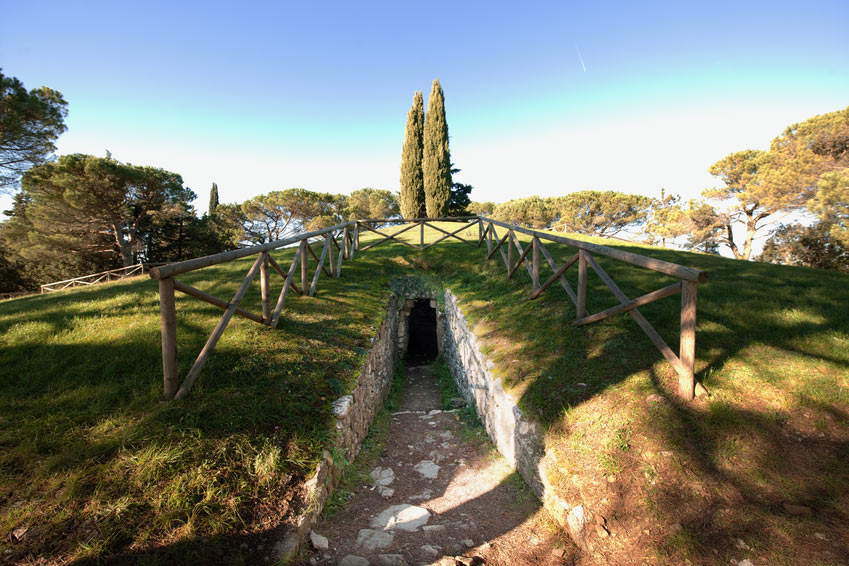 The Montecalvario
The Montecalvario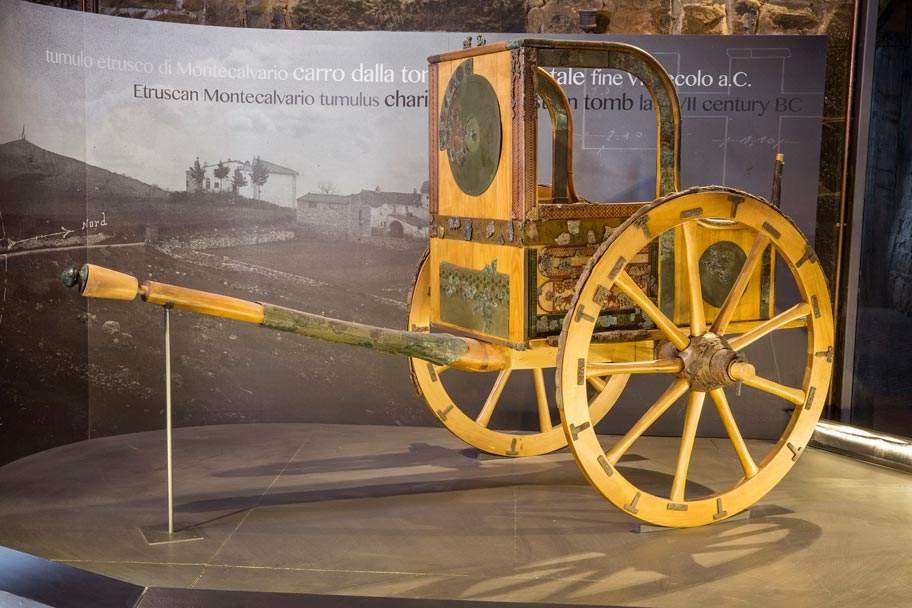

TheAntiqurium of Poggio Civitate - Archaeological Museum houses the so-called “big chapel” of Murlo. It is one of the acroterial statues made for the princely palace that in Etruscan times stood on the hill of Poggio Civitate, an important settlement at the center of the roadways that connected inland cities with those on the coast. For the roof, soaring and clearly visible from afar in all its unusual magnificence, artisans from Murlo (in fact, all the decorations were produced locally and modeled by hand) made highly original acroterial statues in painted terracotta that, while retaining an echo of oriental flavor, still have not found timely stylistic comparisons. Notable among the human-figure acroteria is the one that has since become the symbol of the museum: the “big hat” precisely, a seated male figure with a long, square beard, wearing a wide-brimmed hat with a very high, pointed cap (hence the epithet), the shape of which cannot but be strikingly reminiscent of the Mexican hat, the sombrero. Given the uniqueness of the find, it is speculated that it was worn, at least in the case of Murlo, by eminent personages, perhaps for the purpose of exalting their authority. The terracotta statue, which originally stood on the crest of the roof of the stately palace, was perhaps the figure of an ancestor-hero whose task was to protect the Etruscan family.
Also at the Antiquarium of Poggio Civitate are the clay slabs that decorated the portico on three sides of the palace. The narrative unfolds along four main scenes: the horse race, the banquet, the assembly of the gods, and the procession. These narratives are worth lingering over, not least because in addition to their undisputed aesthetic value the Murlo slabs represent the oldest examples of their kind ever found in Etruria. In the banquet scene, probably a royal banquet, we recognize many of the ceramic forms actually found during the excavations. It is a lively scene despite the solemnity of the occasion: in fact, two couples lying on klinai, servants with jugs in their hands or intent on playing flutes to cheer the diners, tables set with fruit and meat, under which crouching dogs are depicted.
In the slab with the horse race, horses are depicted galloping and mounted by jockeys riding bareback, clutching reins in their right and a whip in their left, intending to compete for the ultimate prize, a bronze lebete , also depicted in the frieze.
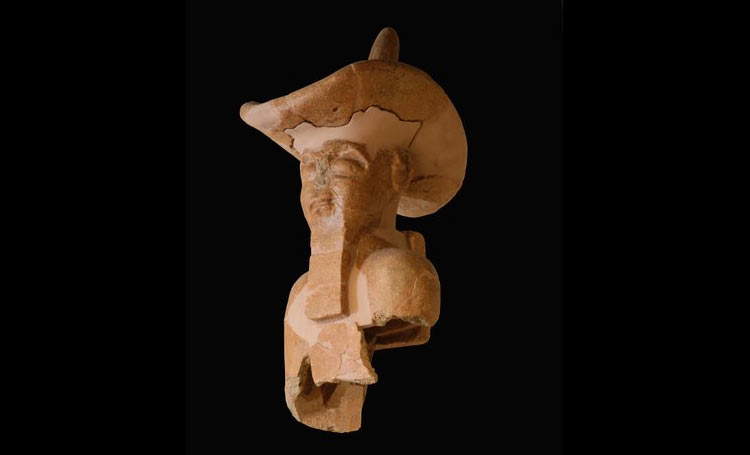
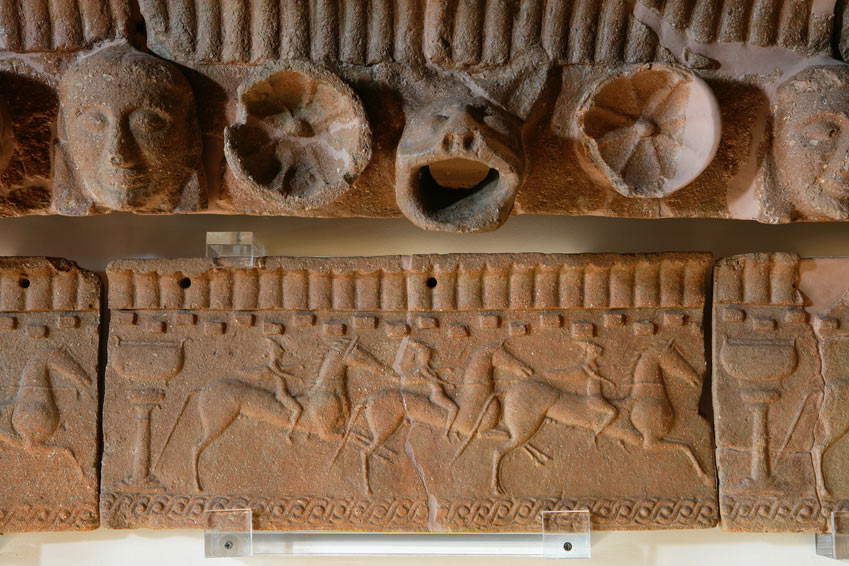
II territory of Chianciano Terme owes its fortune to its proximity to the fertile and industrious valley of the Chiana River, a natural route of communication laid between northern Etruria on the one hand and upper Latium and the cities of coastal Etruria on the other. The abundance of water springs, at which important places of worship arose in ancient times (water was both a fundamental element in religious practices and an object of worship itself) represents, since antiquity, a fundamental aspect of this territory and its development, so much so that the local museum is called the Museo Civico Archeologico delle Acque; inside it (the museum is housed in the former Simoneschi granary, a building arranged on three floors and a basement, built at the end of the 19th century) are kept the materials found in the municipal area,mostly from the Geoarchaeological Association of Chianciano, and through them various aspects of the daily life of Etruscan man are analyzed and reconstructed.
The first section of the museum, on the ground floor, houses the scenic, life-size reconstruction of a chamber of one of the richest tombs found in the territory of Chianciano; it is a princely tomb, datable to the last thirty years of the seventh century B.C., found in a necropolis in the locality of Morelli, not far from the town, and near an important road axis that led, through the valleys of the Orcia and Ombrone, to the coast. The tomb consisted of an atrium with side chambers, unfortunately breached, and a large rectangular chamber, divided into two compartments by a partition, which instead returned intact grave goods, although damaged by the collapse of the roof. The objects found clearly and explicitly express the status.Of the deceased: A personage of aristocratic rank, surrounded by “symbolic objects” such as the bucchero symposium pottery, the very precious mensa (a bronze foil trapeze with embossed worked top as well as well as the legs, decorated with geometric motifs, lotus flowers and fantastic and real animals on horizontal bands separated by strands of beads) with bronze vessels and iron altars, alluding to the aristocratic practice of banqueting and the ritual of meat consumption connected with animal sacrifice. Of particular refinement is the globular ossuary made of a single bronze sheet, covered with a thin sheet of gold on which were applied two bone eyes with amber pupils. The discovery of remnants of fabric, moreover, made it possible to hypothesize the presence of a mantle, closed by a fibula, which wrapped the ossuary, behind which was laid (in the reconstruction it appears resting on the back wall) a shield of bronze foil embossed with geometric, vegetal and zoomorphic motifs, the presence of which, together with the objects connected with the symposium, reaffirms the deceased’s belonging to an aristocratic family.
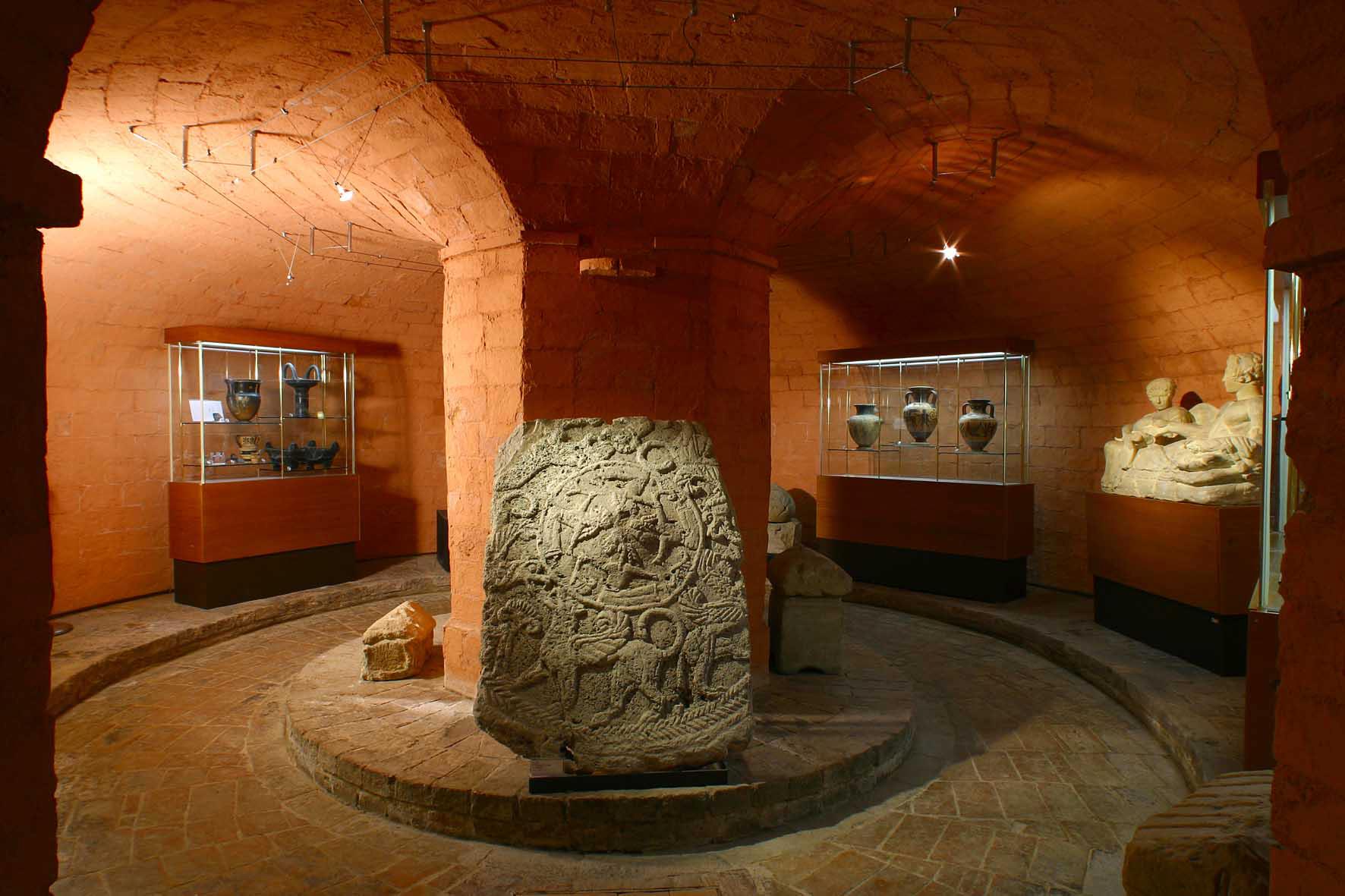
The “Ranuccio Bianchi Bandinelli” Archaeological Museum in Colle di val d’Elsa, arranged over fifteen rooms, houses one of the most important grave goods in the Siena area, that of the noble Calisna Sepu family, whose tombs were found in the Casone necropolis in Monteriggioni and date from between the fourth and first centuries B.C. This is a necropolis of great importance, since 105 depositions were found there, and it is one of the most important sites of its kind in the whole of northern Etruria of the period (few other similar examples exist, both in terms of richness and continuity of use). Among the grave goods, which have yielded more than four hundred artifacts since 1893 (the date when the tomb of the Calisna Sepu was discovered) are precious objects such as buccheri, bronze mirrors, and vases intended for use on the tables of aristocrats. Prominent among the vessels are splendid kelebai (kraters, i.e., vessels used for mixing wine and water, with small columns, typical of the Volterra area) painted with red figures, one of which is the namepiece of the so-called Pygmy Painter Trumpeter, and dating from a period between the late 4th and early 3rd centuries B.C.
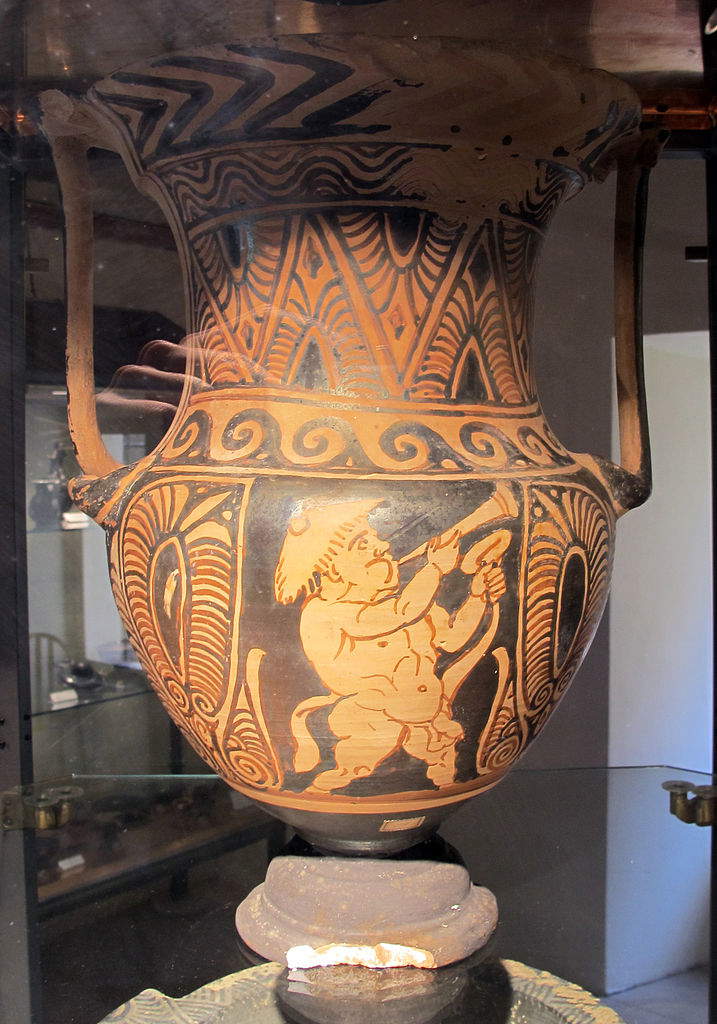
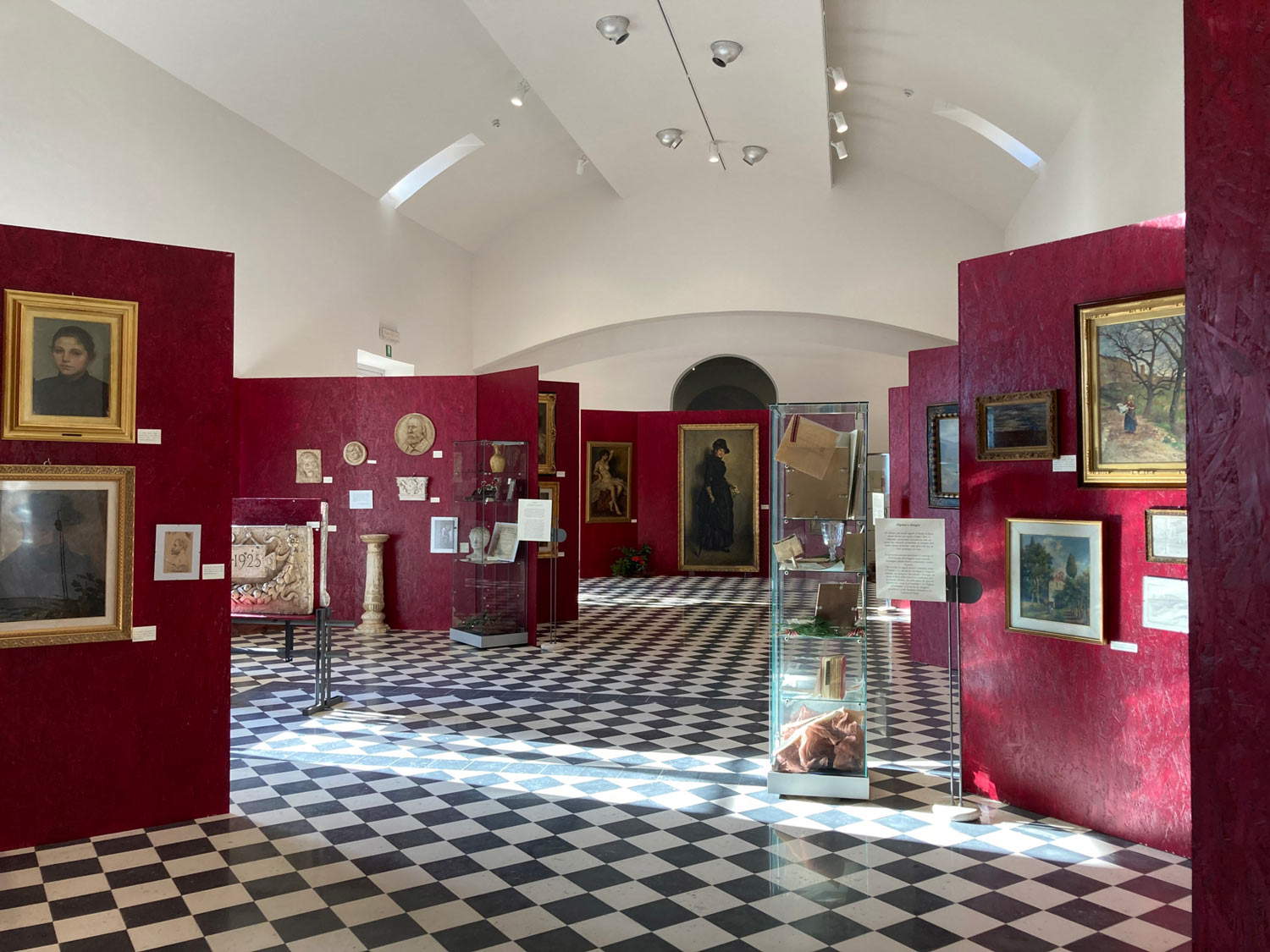
An itinerary to discover the life of Etruscan princes certainly cannot skip the city of Chiusi, which between the late 6th and early 5th centuries B.C. was ruled by Lars Porsenna, the most famous of the Etruscan kings, famous for leading, between 508 and 507 B.C., the siege of Rome after the deposition of the last king, Tarquinius the Superbus. Roman historians relate that Tarquinius had sought Porsenna’s support in attempting the restoration of his power: Chiusi, then a powerful city, moved its army against Rome (the action was also moving in the context of Etruscan expansionism), and again according to Roman historiography the city would have succeeded in repelling the Etruscan attack. More recent studies, however, seem more inclined to think that Porsenna succeeded in laying siege to Rome but ended up coming to peace with the defenders in the face of the prospect of a long and wearisome war against an enemy that had shown a willingness to defend itself valiantly. The peace treaty was, moreover, very favorable to Rome, which gained the ability to maintain its republican set-up.
Pliny, in his Naturalis Historia, relates that Porsenna was buried under the city of Chiusi in a fabulous and labyrinthine mausoleum from which it was impossible to get out without getting one’s bearings. The echoes of this story somewhere between history and legend are retraced at the Civic Museum “The Underground City” of Chiusi, where a section, entitled “The Labyrinth,” evokes and documents the myth of Porsenna through information panels, interactive tools and a large model. According to legend, in fact, Porsenna’s mausoleum would be located at the very center of a labyrinth dug underground in Chiusi. In the past, many have attempted to trace the fabled tomb: only in 2012, however, were two rooms found (though not in Chiusi, but near Orvieto) connected to a tunnel system that might be reminiscent of Porsenna’s labyrinth, though there are no links to suggest this. Instead, the so-called “Labyrinth of Porsenna,” which is actually located underneath Chiusi and was so renamed by the archaeologists who discovered it in the 1920s, is actually an aqueduct from the 1st century B.C, whose development into complex tunnels made scholars of the time believe that they had found the mythical tomb of the Etruscan king (the “Labyrinth” can be visited today, accessed from the Cathedral Museum).
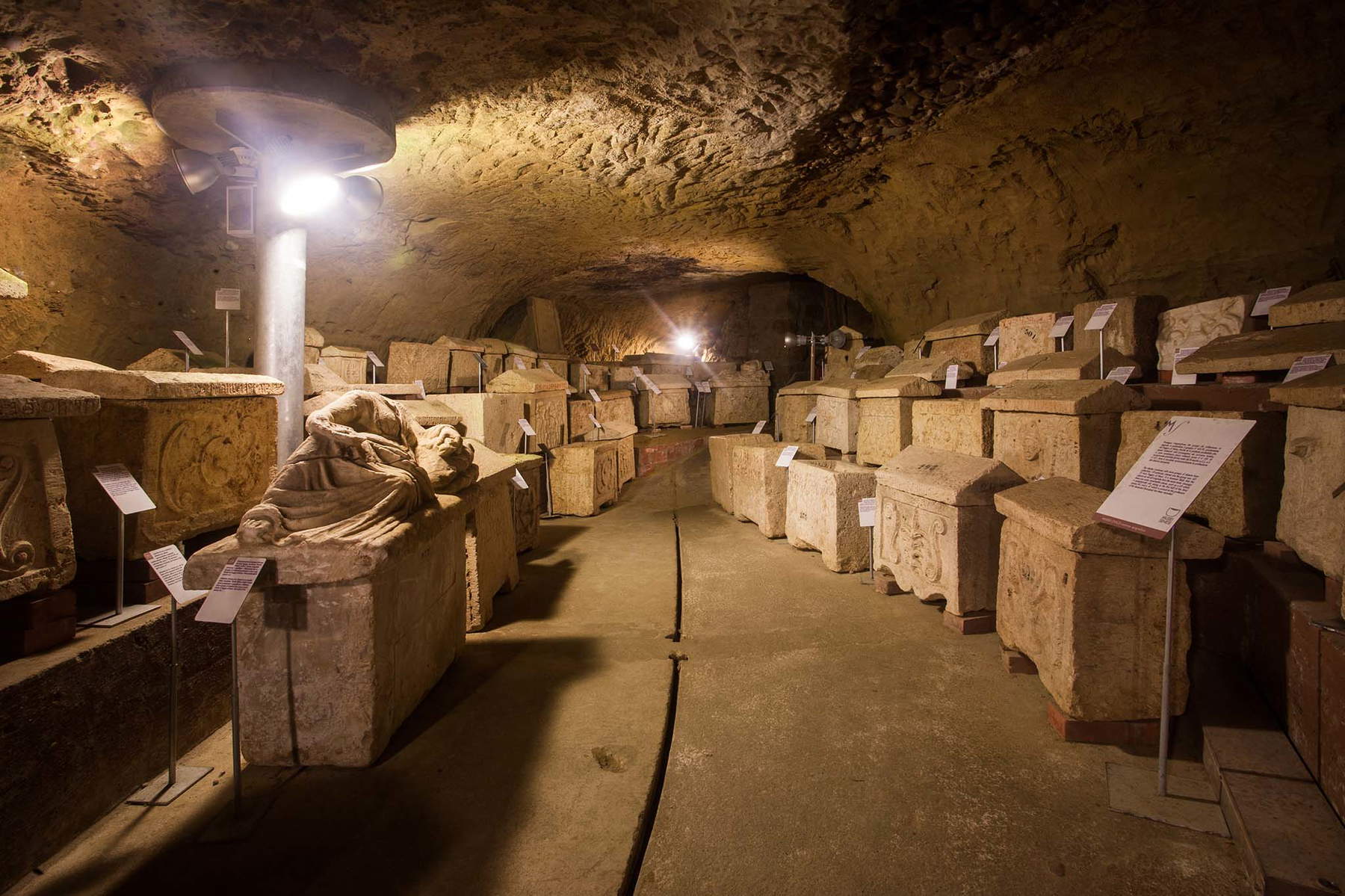 The
The
 |
| Getting to know the Etruscan princes. An itinerary from Chianti to Valdichiana |
Warning: the translation into English of the original Italian article was created using automatic tools. We undertake to review all articles, but we do not guarantee the total absence of inaccuracies in the translation due to the program. You can find the original by clicking on the ITA button. If you find any mistake,please contact us.